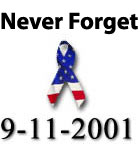NOAA IS SEEKING COMMENTS ON A PROPOSED RULE TO CHANGE GAG, RED GROUPER, AND SHALLOW-WATER GROUPER MANAGEMENT MEASURES IN THE GULF OF MEXICO
NOAA’s National Marine Fisheries Service (NOAA Fisheries Service) is seeking public comment on a proposed rule that would implement measures to end overfishing of gag and revise shallow-water grouper (SWG) management measures as a result of changes in the stock condition. The most recent assessments for gag and red grouper indicate changes in stock condition. For gag, landings need to be reduced to end overfishing and be consistent with the fishing mortality level needed to harvest the optimum yield. For red grouper, the stock condition has improved and allows for an increase in harvest. To ensure harvest targets are met, the rule proposes annual catch limits (ACLs) and accountability measures (AMs) for these species. These measures are outlined in Amendment 30B to the Fishery Management Plan for the Reef Fish Resources of the Gulf of Mexico submitted by the Gulf of Mexico Fishery Management Council. The proposed rule was published in the Federal Register on November 18, 2008, with the comment period ending January 2, 2009.
Proposed Management Measures
For the recreational fishery, the proposed rule would:
· Establish ACLs and AMs for gag and red grouper.
· Reduce the gag bag limit to two fish per person per day and the aggregate grouper bag limit to four fish per person per day.
· Increase the red grouper bag limit to two fish per person per day.
· Extend the closed season for recreational shallow-water grouper to February 1 through March 31.
For the commercial fishery, the proposed rule would:
· Establish ACLs and AMs for gag, red grouper, and SWG.
· Establish a commercial quota for gag of 1.32 million pounds (mp) in 2009, 1.41 mp in 2010, and 1.49 mp in 2011.
· Increase the commercial quota for red grouper to 5.75 mp.
· Set the SWG quota as the sum of the gag and red grouper quotas with an additional 0.41 mp allowance for other SWG species.
· Establish an incidental bycatch allowance trip limit for commercial gag and red grouper of 200 pounds for the species that first reaches 80 percent of its quota.
· Reduce the commercial minimum size limit for red grouper from 20 inches to 18 inches total length to reduce bycatch.
In addition, the proposed rule would:
· Establish the Edges 40-fathom contour seasonal-area closure. This area will be closed to all fishing for Council-managed species from January 1 through April 30 each year and is intended to protect gag and other groupers during their respective spawning seasons.
· Eliminate the end date for the Madison-Swanson and Steamboat Lumps marine reserves.
· Require a person aboard a federally permitted Gulf of Mexico commercial or for-hire reef fish vessel to comply with federal regulations for reef fish species regardless of where the fish are harvested to increase compliance with federal regulations.
Accountability Measures and Annual Catch Limits
The proposed rule would address requirements of the Magnuson-Stevens Fishery Conservation and Management Act that ACLs and AMs be in place for stocks undergoing overfishing by 2010. The ACL must be set ‘‘at a level such that overfishing does not occur in the fishery.’’ AMs are management measures established with ACLs to end and prevent overfishing.
Proposed AMs for gag and red grouper give the NOAA Fisheries Service Assistant Administrator (AA) the authority to shorten the fishing season for a particular sector if that sector’s landings go over the ACLs. The recreational AM would provide the AA the authority to shorten the fishing year in the following year if the ACL is exceeded, while the commercial AM would give the AA the authority to shorten the fishing season within the fishing year and in the following year if the commercial ACL is exceeded. Recreational ACLs would be defined as multi-year running average landings, with exception of the first year which would use only 2009 landings.
Dates and Addresses
Written comments must be received no later than 5 p.m., Eastern time, on January 2, 2009. You may submit comments by any of the following methods:
● Electronic Submissions: Federal e-Rulemaking Portal: http://www.regulations.gov <http://www.regulations.gov/> . All comments received are part of the public record and will generally be posted to http://www.regulations.gov <http://www.regulations.gov/> without change. All personal identifying information (for example, name, address, etc.) voluntarily submitted by the commenter may be publicly accessible. Do not submit confidential business information or otherwise sensitive or protected information. NOAA Fisheries Service will accept anonymous comments. To submit comments enter “NOAA-NMFS-2008-0203” in the keyword search and then select for the proposed rule “send a comment or submission.” Attachments to electronic comments will be accepted in Microsoft Word, Excel, WordPerfect, or Adobe PDF file formats only.
● Mail: Peter Hood, Southeast Regional Office, NOAA Fisheries Service, 263 13th Avenue South, St. Petersburg, Florida 33701.
● Fax: 727-824-5308, Attention: Peter Hood.
The proposed rule is also available via the Internet at http://www.gpoaccess.gov/fr/index.html (do an advanced search under proposed rules for “page 68390”). Printed or electronic copies of the rule and Amendment 30B can be obtained from the Southeast Regional Office by contacting Peter Hood (see address above).
Comments must be received by January 2, 2009, to be considered by NOAA Fisheries Service in its decision on the final rule. All comments received by NOAA Fisheries Service specific to the proposed rule will be addressed in the final rule.
This bulletin provides only a summary of the information pertinent to the rule. Any discrepancies between this bulletin and the rule as published in the Federal Register will be resolved in favor of the Federal Register.
How Can We Improve These Fishery Bulletins?
If you have any suggestions on how we may improve the contents of future fishery bulletins, please contact:
Kim Amendola, Communication Specialist,
Phone: 727-551-5707, FAX: 727-824-5320,
e-mail: SERO.Communications.Comments@noaa.gov
|


